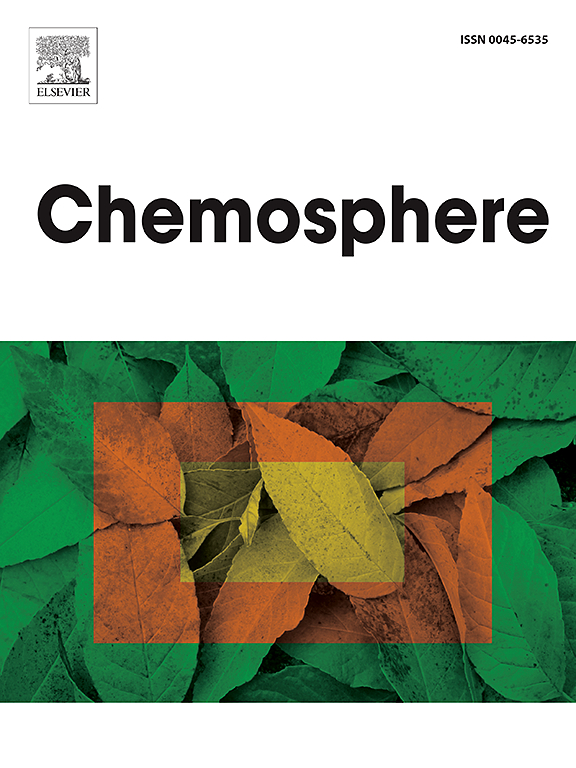Human exposure and toxicity of per- and polyfluoroalkyl substances: Narrative review and perspectives
IF 8.1
2区 环境科学与生态学
Q1 ENVIRONMENTAL SCIENCES
引用次数: 0
Abstract
In this paper, the status of per- and polyfluoroalkyl substances (PFAS) is narratively reviewed from the perspective of toxicity mechanisms, biodistribution, species differences, human exposure sources, human biomonitoring, and epidemiology. Although toxicological investigations have been conducted, interspecies differences in toxicological mechanisms and toxicokinetics are not fully understood. For example, peroxisome proliferator-activated receptors (PPARα) are a target receptor of PFAS. Although there are distinct differences in response between rodents and humans, human PPARα can be activated at a high dose and PPARα-independent effects are also observed. In addition, epidemiological studies provide mechanistic evidence in carcinogenesis (epigenetics and immunomodulation). In humans, the biological half-lives of several PFAS over years are longer than in other species because of low renal clearance. Genetic differences in transporter proteins (e.g. OAT) may explain the long half-lives in humans. We present data from Japan for human exposure and biomonitoring. Exposure to PFAS is still caused via contaminated drinking water and consumption of contaminated foods around military bases (Okinawa, western Tokyo, etc.) and fluorochemical plants (Osaka, etc) due to past PFAS uses. Even without specific contamination, seafood consumption is a common route of exposure in Japan and East Asian countries, resulting in elevated baseline in blood PFAS levels. For sustainable economic progress, it is necessary to properly prevent or manage the negative effects of various chemicals while making good use of their positive characteristics. Consequently, it is necessary to understand their mechanisms of toxicity, elucidate the kinetics in the human body, and consider combined exposure effects. A normative approach and establishment of a management system are required for PFAS in the future.

人类接触全氟烷基和多氟烷基物质及其毒性:叙述性审查和观点
本文从全氟和多氟烷基物质的毒性机制、生物分布、种类差异、人体暴露源、人体生物监测和流行病学等方面综述了全氟和多氟烷基物质的现状。虽然已经进行了毒理学调查,但毒理学机制和毒性动力学的种间差异尚未完全了解。例如,过氧化物酶体增殖激活受体(PPARα)是PFAS的靶受体。尽管啮齿动物和人类的反应存在明显差异,但人类PPARα可以在高剂量下被激活,并且也观察到PPARα不依赖的效应。此外,流行病学研究提供了致癌机制的证据(表观遗传学和免疫调节)。在人类中,由于肾脏清除率低,几种PFAS的生物学半衰期比其他物种更长。转运蛋白(如OAT)的遗传差异可能解释了人类半衰期长的原因。我们提供了来自日本的人类暴露和生物监测数据。由于过去使用过PFAS,在军事基地(冲绳、东京西部等)和氟化工厂(大阪等)周围饮用受污染的饮用水和食用受污染的食品仍可导致PFAS暴露。即使没有特定的污染,在日本和东亚国家,食用海鲜也是一种常见的接触途径,导致血液中PFAS水平基线升高。为了经济的可持续发展,有必要在充分利用各种化学品的积极特性的同时,对其负面影响进行适当的预防或管理。因此,有必要了解它们的毒性机制,阐明其在人体内的动力学,并考虑综合暴露效应。今后需要采取规范的办法并建立管理制度。
本文章由计算机程序翻译,如有差异,请以英文原文为准。
求助全文
约1分钟内获得全文
求助全文
来源期刊

Chemosphere
环境科学-环境科学
CiteScore
15.80
自引率
8.00%
发文量
4975
审稿时长
3.4 months
期刊介绍:
Chemosphere, being an international multidisciplinary journal, is dedicated to publishing original communications and review articles on chemicals in the environment. The scope covers a wide range of topics, including the identification, quantification, behavior, fate, toxicology, treatment, and remediation of chemicals in the bio-, hydro-, litho-, and atmosphere, ensuring the broad dissemination of research in this field.
 求助内容:
求助内容: 应助结果提醒方式:
应助结果提醒方式:


